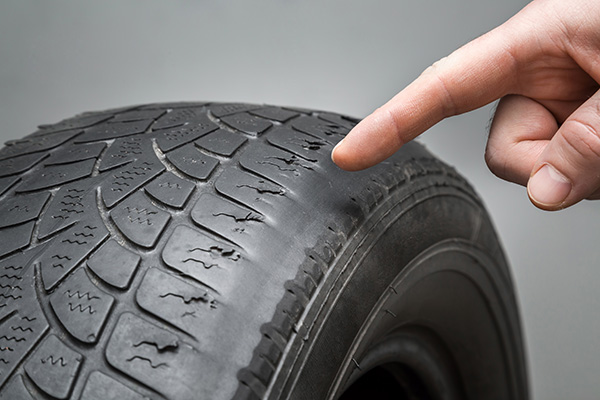
Your car’s tires are more than just rubber on the road—they determine your vehicle’s performance, safety, and fuel efficiency. Over time, however, even the best tires wear out, and knowing when to replace them is key to avoiding accidents. But how can you tell when it’s time to get new tires?
1. Tread Depth
Tread depth is one of the easiest and most reliable indicators that your tires are due for replacement. The grooves in your tire’s tread help channel water away, giving your car the grip it needs on wet roads. Once your tread is worn down, it can’t do its job as well, putting you at risk for skidding or hydroplaning.
A quick way to check tread depth is the penny test. Simply insert a penny into the tread grooves with Lincoln’s head upside down and facing you. If you can see the top of his head, your tread is less than 2/32” deep, which means it’s time to replace your tires immediately. Even if your tires pass the penny test, it’s wise to start shopping for new ones once they get below 3/32” of depth.
2. Cracks and Bulges
Tires don't just wear out from driving; they also age, even if you’re not putting many miles on them. Over time, exposure to sunlight, heat, and fluctuating weather can cause cracks to form in the tires' rubber, making them brittle. If you notice cracks or bulges on the sidewalls of your tires, it’s a clear sign that the integrity of the rubber has been compromised.
These cracks, often referred to as “dry rot,” can lead to a sudden blowout if not addressed. Bulges, on the other hand, indicate that the internal structure of the tire has been weakened, increasing the risk of a tire failure while driving.
3. Vibration While Driving
Feeling unusual vibrations while driving could be a sign that something’s wrong with your tires. While there could be other reasons—such as wheel alignment issues or worn suspension components—tires are often the culprit. Uneven tire wear or internal damage can cause your car to shake or vibrate, especially when driving at higher speeds.
If you feel a consistent vibration, it’s worth having your tires inspected to determine if they’re the root of the problem. Driving on damaged tires only exacerbates the issue, leading to more significant damage to your car and potentially hazardous driving conditions.
4. Age of the Tires
Even if your tires still have good tread left, their age alone could be a reason to replace them. As tires age, their rubber compounds break down, becoming less flexible and less capable of maintaining proper traction. Most tire manufacturers recommend replacing tires every six to ten years, regardless of how much tread remains.
You can check the age of your tires by looking for the DOT code on the sidewall. The last four digits of this code indicate the week and year the tire was manufactured. For example, a code ending in “3418” means the tire was made in the 34th week of 2018. If your tires are pushing six years or more, it’s time to start thinking about replacements, even if they appear to be in decent condition.
5. Uneven Wear Patterns
If you notice that your tires are wearing unevenly—such as more wear on the edges or in the center—that could be a sign of improper tire pressure, poor wheel alignment, or suspension issues. For example, over-inflated tires tend to wear out in the center, while under-inflated tires wear more on the outer edges. Uneven tire wear can drastically reduce the lifespan of your tires and compromise their performance on the road.
It’s important to regularly check your tire pressure and have your alignment inspected to ensure that your tires are wearing evenly. If you catch the issue early enough, you may be able to extend the life of your tires with proper inflation and alignment adjustments.
Wondering if your tires need replacing? Let the experts at Autobahn Auto Repair inspect them for you. We’ll help you avoid unexpected tire blowouts and keep your vehicle running safely and efficiently.